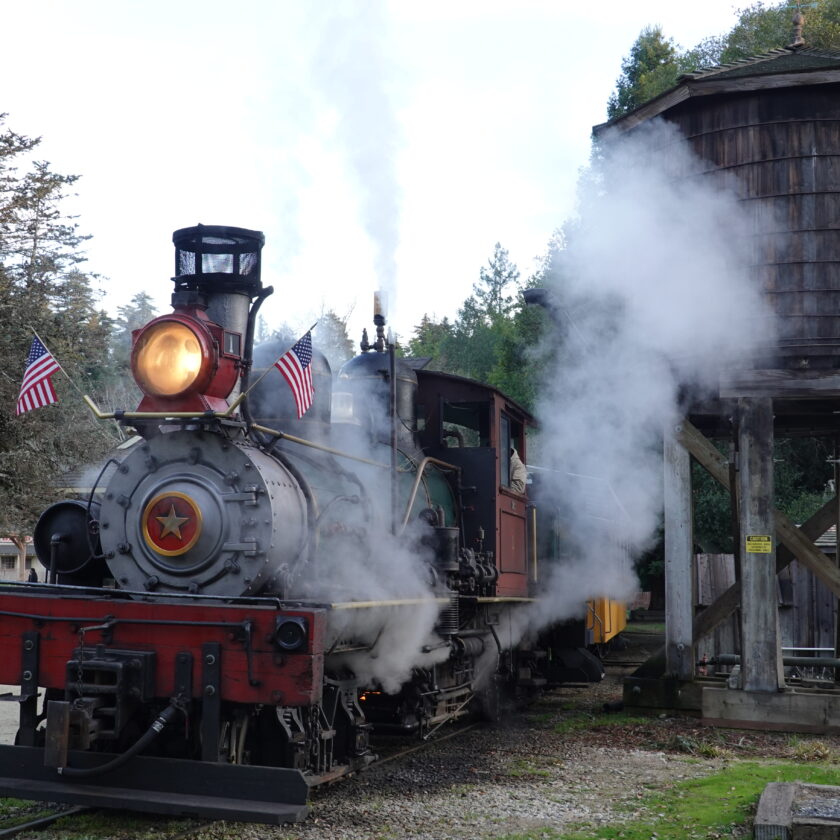Path to Rail Trail Decision Must Cross Four Bridges
By Jayme Ackemann
The debate over the Santa Cruz County Regional Transit Commission’s (RTC) Rail Corridor Study hit an impasse recently when the Commission deadlocked over a vote to adopt a business plan for the preferred light rail alternative, which was selected by the commission in February.
The two votes seem to be at odds with one another – selecting light rail as the preferred alternative but later rejecting the business plan as “too expensive” according to some commissioners. The study centers around whether to use the corridor for trains, active uses like bicycling and running, or some combination of all the above.
Newly elected Santa Cruz County Supervisor Manu Koenig is among those who want to see the corridor converted to bicycle and pedestrian uses. Koenig said about the recent vote in his newsletter, “This creates an opportunity to study trail options in greater detail.” He added, “Doing so will allow for more flexibility to the RTC in choosing a preferred alternative.” More flexibility to choose a “preferred alternative” suggests that the preferred alternative selected in February – wasn’t really, at least not for some commissioners.
But for Roaring Camp Railroad the question isn’t academic, it’s potentially existential. Roaring Camp’s Boardwalk route crosses the path now under consideration for pedestrian and bicycle use, raising concerns about whether the operator will be able to continue using that route should RTC proceed with the trail alternative.
Melani Clark, Roaring Camp Railroad CEO said, “We’re a common carrier. If that is cut off, we would not have contact with the national railroad network which could mean losing our designation, losing our trackage rights to get to the Boardwalk, or to get in new or repaired equipment.”
But RTC is offering vague assurances about potential impacts to Roaring Camp’s operations. In a written statement, Communications Specialist Shannon Munz said, “Although the trackage rights agreement that Roaring Camp has to go to the Boardwalk is an agreement between Roaring Camp and St. Paul & Pacific Railroad, potential impacts of potential RTC actions to that trackage rights agreement would also be carefully considered by the RTC along with other potential impacts.”
All “potentially” clear?
Roaring Camp attracts tourists from around the world to the San Lorenzo Valley. But the railroad is also a freight operator. Recently, it announced an agreement with Progressive Rail, the parent company of St. Paul & Pacific Railroad, to operate freight service in Watsonville on behalf of customers – like Big Creek Lumber – who rely on the corridor to move its heavy freight to market.
As part of Roaring Camp’s announcement, they also sent a message to Commissioners considering the future uses of the corridor, “The railroad is looking forward to working together with Watsonville community businesses who use rail to receive and transport their valuable goods. Roaring Camp strongly supports the preservation of rail operations in Santa Cruz County. Rail provides important flexibility for the future of transportation in the community.”

Four bridges
The future seems to rest on the fate of four rail bridges – two cross highways, two cross creeks – in the Aptos area. Two will be reconstructed as part of a Highway One widening project – whether they are rebuilt to weight-bearing standards for freight carriage and how the two creek-crossings are ultimately handled could have a significant impact on the long-term future for rail service in Santa Cruz County.
One alternative under consideration if the board moves forward with a trail plan would be “railbanking” the corridor so that it could be restored for rail use in the future. The practice of “railbanking” was established through the 1983 “National Trails System Act” as a “voluntary agreement between a rail service company and trail agency to use an out-of-service rail corridor as a trail until the railroad might need the corridor again for rail service.”
According to the act, the “abandoning railroad” has the right to re-establish rail operations at a later date but to do that they must agree to purchase the corridor back from the managing agency for “fair market compensation.”
Progressive Rail did indicate interest in abandoning the corridor in 2020 but subsequently rescinded the formal request for abandonment and contracted the service to Roaring Camp. It’s unclear what the company’s long-term plans are for the branch line – but for now freight service does operate on the segment of the line that originates out of Watsonville.
In the end it may be Progressive Rail who ultimately determines which “track” this trail study ends up on. But for San Lorenzo Valley, it’s important that whichever path the project takes, our “Little Engine That Could” continues to roar.
Jayme Ackemann is a public affairs consultant and freelance writer. She has worked on major capital investments and water infrastructure capital construction projects in the Bay Area. Jayme has been a resident of Ben Lomond for more than 15 years.
Featured photo by Nathan Guzman
The San Lorenzo Valley Post is your essential guide to life in the Santa Cruz Mountains. We're dedicated to delivering the latest news, events, and stories that matter to our community. From local government to schools, from environmental issues to the arts, we're committed to providing comprehensive and unbiased coverage. We believe in the power of community journalism and strive to be a platform for diverse voices.






Rail can and will serve our villages in ways that the highway cannot. Losing it would be permanent destruction of the trail and its access to south county.
The TCAA business plan shows the rail idea is simply untenable. Funding does not exist and it simply will have no impact on our crowded streets and highways. We have been without passenger rail travel for one simple reason, trying to revive a 140 year old freight line does not match our population’s needs. We need to modernize Metro, not try to resurrect something that died 50 years ago. Let’s get active transportation started. Using the corridor for inner and inter community active transportation is a much better choice. We simply don’t have the $1 billion needed and the twenty years to make rail happen here.